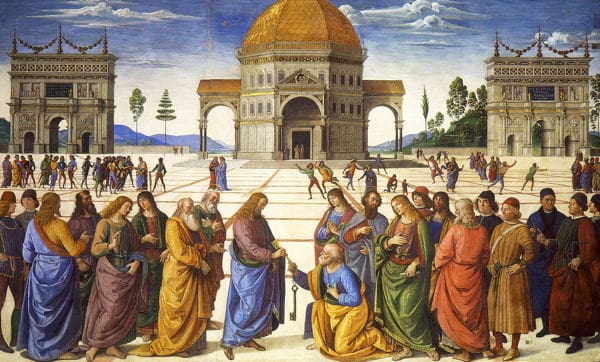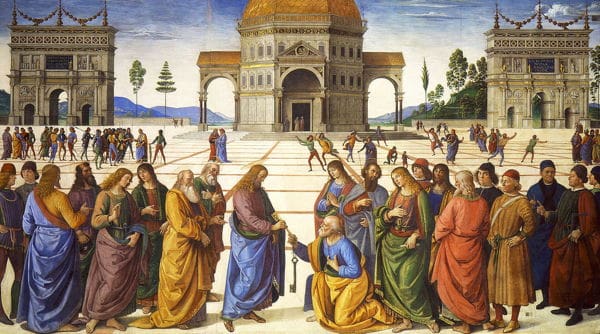Chair of Peter Mercy Seat
To the casual observer, it seems quite silly to honor a chair, although universities, corporations and others have Chairs. But, that perspective changes when one understands why the Church celebrates the Chair of Peter this day.
The “Cathedra” is the chair in which the bishop sits. And, by extension, Cathedra refers to the authority of the bishop who occupies it. Thus, today’s feast, which is found in ancient martyrologies,* celebrates the authority Christ gave to the Church, and very specifically, to our first pope, St. Peter and his successors, when Jesus said to Peter, “You are Peter and upon this rock I will build my Church…I will give you the keys of the kingdom of heaven” (cf Matthew 16:18, 19).
 As St. Cyprian wrote in the year 251 A.D.,
As St. Cyprian wrote in the year 251 A.D.,
“There is one God and one Christ, and one Church, and one Chair founded on Peter by the word of the Lord. It is not possible to set up another altar or for there to be another priesthood besides that one altar and that one priesthood. Whoever has gathered elsewhere is scattering.”**
We read in Scripture that Jesus Himself often sat down to teach (cf Matthew 5:1, 13:1-9, 26:55; Mark 4:1, 9:35; Luke 4:20-21, 5: 3; John 8:2). As well, He referred to the authority of the chair when He spoke of the scribes and Pharisees sitting on the chair of Moses (cf Matthew 23:2), something very well understood in Old Testament times.
According to St. Jerome, the “chair” is a metaphor for the doctrine of the law. So, when a Pope speaks “ex cathedra” he is speaking infallibly on matters of faith and morals, as defined by the First Vatican Council in the bull Pastor aeternus. Vatican Council II reaffirmed this teaching. And, the Congregation for the Doctrine of the Faith reiterated it in the document promulgated as “The Primacy of the Successor of Peter in the Mystery of the Church”, which was signed by then Cardinal Josef Ratzinger (Pope Benedict XVI).
In the Old Testament, the kapporeth referred to a covering on the ark of the covenant. It was sprinkled with the blood of a bull, by the High Priest, as atonement for sin.
Because the Church is the Body of Christ, it mystically undergoes everything He did, including His Crucifixion. And, very early on, Christians came to understand the Cross as the mercy seat from which Christ teaches, reigns and rules…and the Chair of Peter as the expression of that throughout history.
Pope Francis was on to something when he declared this the “Jubilee Year of Mercy” in his Bull of Indiction “Misericordiae Vultus”. In this season of Lent, and particularly during this Year of Mercy, I invite you to join me in reflecting and making mercy a greater part of your everyday life. Just as Christ rules from the mercy seat of the cross, so too, for you and for me, when mercy is our measure, we will manifest the face of Christ, the “Misericordiae Vultus” (Face of Mercy), to a world which has forgotten what He looks like. And, we will rule with Him who for the sake of the joy that lay before Him endured the Cross and is seated at the right hand of God the Father (cf Hebrews 12:2). It is then that our lives will be full and our joy complete, even as we begin to taste this here and now!
Happy Feast Day to One and All!
+
* Shea, J. G. (1887). Pictorial Lives of the Saints (pp. 104–105). New York; Cincinnati; Chicago: Benziger Brothers.
** Ray, S. K. (1999). Upon This Rock: St. Peter and the Primacy of Rome in Scripture and the Early Church (p. 187). San Francisco: Ignatius Press.
+
Art: Entrega de las llaves a San Pedro (Giving of Keys to Saint Peter), Pietro Perugino, between 1481 and 1482, PD-US author’s term of life plus 100 years or less, Wikimedia Commons.




